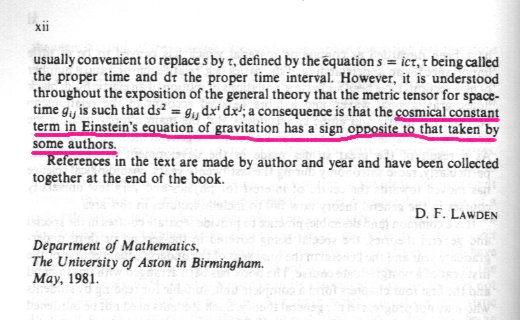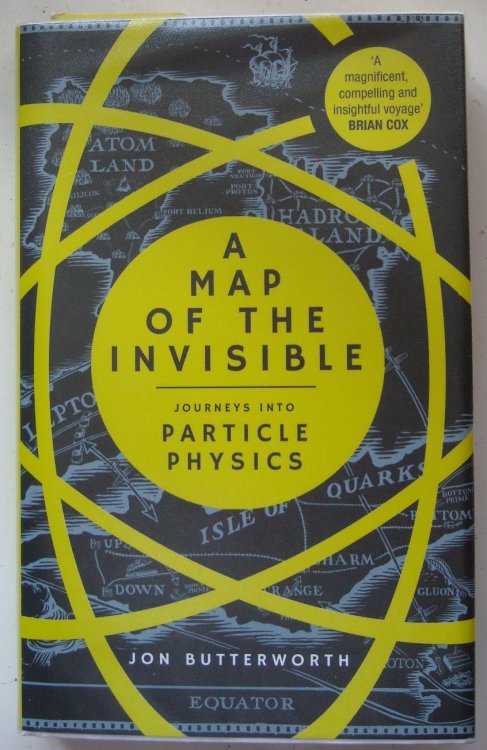-
Posts
18483 -
Joined
-
Last visited
-
Days Won
108
Content Type
Profiles
Forums
Events
Everything posted by studiot
-

Is quantum physics too small to interact with gravity?
studiot replied to AviSchiffmann's topic in Quantum Theory
So strictly in accordance with the rules of ScienceForums they are not theories they are speculations. Small wonder the dog thinks its a pussy cat. -
First of all the universe is not a rigid body. The term centre of mass is only strictly applicable to rigid bodies. Secondly you have to decide if you are talking in Newtonian or Relativistic terms. This is because of the time taken for any force applied at one point to act on another at significant distance. It is even possible for one part of the universe to have responded to a force before the effect of that force has reached another part. Here are the newtonian formulae for the coordinates of COM.
-
As in Hybridisation, Delocalisation per Pi bonding and Resonance.
-

Is quantum physics too small to interact with gravity?
studiot replied to AviSchiffmann's topic in Quantum Theory
You know this and I know this but but does the dog in the doorway know this? (Have you come across that old saw?) IOW how do you get from (1) to the difference between electric and magnetic fields or (2) from C-S to Heisenberg? You need some physical reasoning and observation. -
No. You have mixed up and confused several different concepts or models. We have several because no model is perfect so we select the one that most suits our current needs.
-

Determine atomic mass of isotopes with chemistry.
studiot replied to avicenna's topic in Inorganic Chemistry
Well thank you kind sir. -

Determine atomic mass of isotopes with chemistry.
studiot replied to avicenna's topic in Inorganic Chemistry
But appears convinced that studiot does not exist. -

Is quantum physics too small to interact with gravity?
studiot replied to AviSchiffmann's topic in Quantum Theory
I agree but the link between the formalism and what the modle says about physical reality is often not clear to readers. For example what do the following famous formalisms tell us is happening in Physical reality. [math]{\nabla ^2}\varphi = 0[/math] [math]{\left( {\int {fgdx} } \right)^2} \le \left( {\int {{f^2}dx} } \right)\left( {\int {{g^2}dx} } \right)[/math] The latter is, of course one of the foundation statements of the quantum theory. -

Determine atomic mass of isotopes with chemistry.
studiot replied to avicenna's topic in Inorganic Chemistry
Well I'm not sure exactly what information you are seeking here, but the story of how it was all worked out is fascinating. The process took almost 200 years from about 1660 to the Cannizzaro paper of 1858, via the hypothesis of Avogadro in 1811. There were many blind alleys and false trails along the way, and many famous names contributed sometimes adding correct insights, sometimes getting it hopelessly wrong. The story is too much to put into a forum post, and is in fact the subject of a book in its own right. Chasing the Molecule by John Buckingham. -

Is quantum physics too small to interact with gravity?
studiot replied to AviSchiffmann's topic in Quantum Theory
Yes, of course. That is how Einstein's relativity was born. But that does not mean anything goes just because someone fancies pink unicorns. Nor is this to say the Einstein was a mathematical dunce. Proper scientific reasoning hand-in-hand with observation is more important than mathematics in my opinion. Here is a really superb example Watch my hands - no mathematics at all but we have discovered the order of melting points of these minerals. -
This is reminiscent of the caculation of Madelung constants. Have you heard of these? You should be able to derive similar overall constants for your hypothesis. Now I have done you the courtesy of offering constructive comments and asking a couple of simple questions that can support simple answers rather than long screeds that seem to be prefaced by such get out clauses as " We assume that"......... Now please provide a simple direct answer to a simple direct question.
-
icarus, Since you have been unable to provide an answer to my question about the interaction of negative mass with forces, perhaps you can offer soemthing on the question os mass density. (I note Mordred has already mentioned energy density, which is, of course different) Mass density play an important role in cosmological evolution equations, including Friedmann's solutions so can you offer an expression to calculate the mass density of universe, including the proposed negative mass? What is the result/effect when existing measurements are put in for the constants involved? Mordred has also offered you a large number of references an no doubt you have many of your own. I would therefore council you to beware of sign conventions which can produce unexpected negative signs, for example this warning by DF Lawden.
-

Why mass of electron and proton particles are what
studiot replied to dhimokritis's topic in Speculations
But that would be incorrect. If you look at the front cover you can see the map in the background. Atomland appears on the top left (North West) corner. -

Why mass of electron and proton particles are what
studiot replied to dhimokritis's topic in Speculations
I am seriously sorry if you can't follow that link for some reason, it is to the thread where I posted details of the book. A Map of the Invisible by Jon Butterworth. The book is available from some libraries, Amazon and even second hand. as in the link stated in the thread opening post. -
Yes of course there is, For instance simple harmonic motion, rotational motion. Liquids and gases have other modes of motion. Finally it should be noted that there are many forms of wave motion, but only one form of 'rigid body translational motion'. It should also be noted that some forms of motion may be combined for instance a rigid body may execute tumbling motion by combining translation with rotation. But note that a photon is a particle and does not 'move like a wave'. Light has the dual characteristic of particle and wave - we call the particle part photons and the wave part light waves. An important distinction between wave motion and the motion of a particle is that the motion of a particle is described by the path of its centroid; wave motion is distributed and has no equivalent. But all types of motion have a describing/defining 'equation of motion'.
-
Well in some ways just the same, electrons are still transfered, but the explanation is slightly different. Tribo-electric effects are contact potential effects. The QM explanation is the equalisation and therefore minimisation of the Fermi Energies in both bodies leading to a transfer of electrons, which obviously remain transferred when the bodies are physically separated.
-

Why mass of electron and proton particles are what
studiot replied to dhimokritis's topic in Speculations
The book I recommended offers answers to many to the questions you have grappled with here. You can rely on the provenance of these, the author is head of Physics and Astronomy at University College London and also works at CERN. He also has a good way with expressing matters in plain English. -

How are galaxies expanding along with space time?
studiot replied to Quantum321's topic in Speculations
Thank you for wasting my time and goodnight. -

How are galaxies expanding along with space time?
studiot replied to Quantum321's topic in Speculations
Actually the dimensions of the hubble constant are LT-1L-1 = T-1 or the reciprocal of time or a frequency. -

How are galaxies expanding along with space time?
studiot replied to Quantum321's topic in Speculations
I didn't use the word space. But the balloon skin is the analogy or model for space in this case. And yes the galaxies experience interactive forces just as the molecules of the skin does, but that is outside the analogy. -

How are galaxies expanding along with space time?
studiot replied to Quantum321's topic in Speculations
1) Nothing to do with me. 2) It is perhaps unfortunate that we don't have good words for this or that the words we have possess more than one meaning. So selecting the wrong (inappropriate) meaning for a word can result in a self contradictory meaningless statement. We have the 'balloon analogy". Like all analogies it is not an exact match so it has some properties in common with what we are modelling and some that are different. This is OK just so long as we stick to the matching properties. One property that does match is the process of inflating the balloon. (It is regretable that one small section of scientists chose to hijak the word inflation to mean something entirely different) But anyway imagaine the balloon partly inflated and we paint grid lines onto the surface with dots at each intersection. Now let us inflate the balloon further. We can easily observe several important facts that match what we see in the heavens. 1) The lines and dots are still attached to the same piece of balloon skin. They have not moved. 2) The balloon skin is still a continuous whole, it's just bigger. 3) New skin has appeared everywhere. 4) The lines and dots are now further apart as measured with our original tape measure. Is there anything that troubles you about this? -

How are galaxies expanding along with space time?
studiot replied to Quantum321's topic in Speculations
Space doesn't 'go' anywhere. That is a false premise. What would it move through? -

How are galaxies expanding along with space time?
studiot replied to Quantum321's topic in Speculations
Koti is correct, although he could perhaps have expressed it better. If this is the beginning of a conspiracy theory I am leaving the thread.




